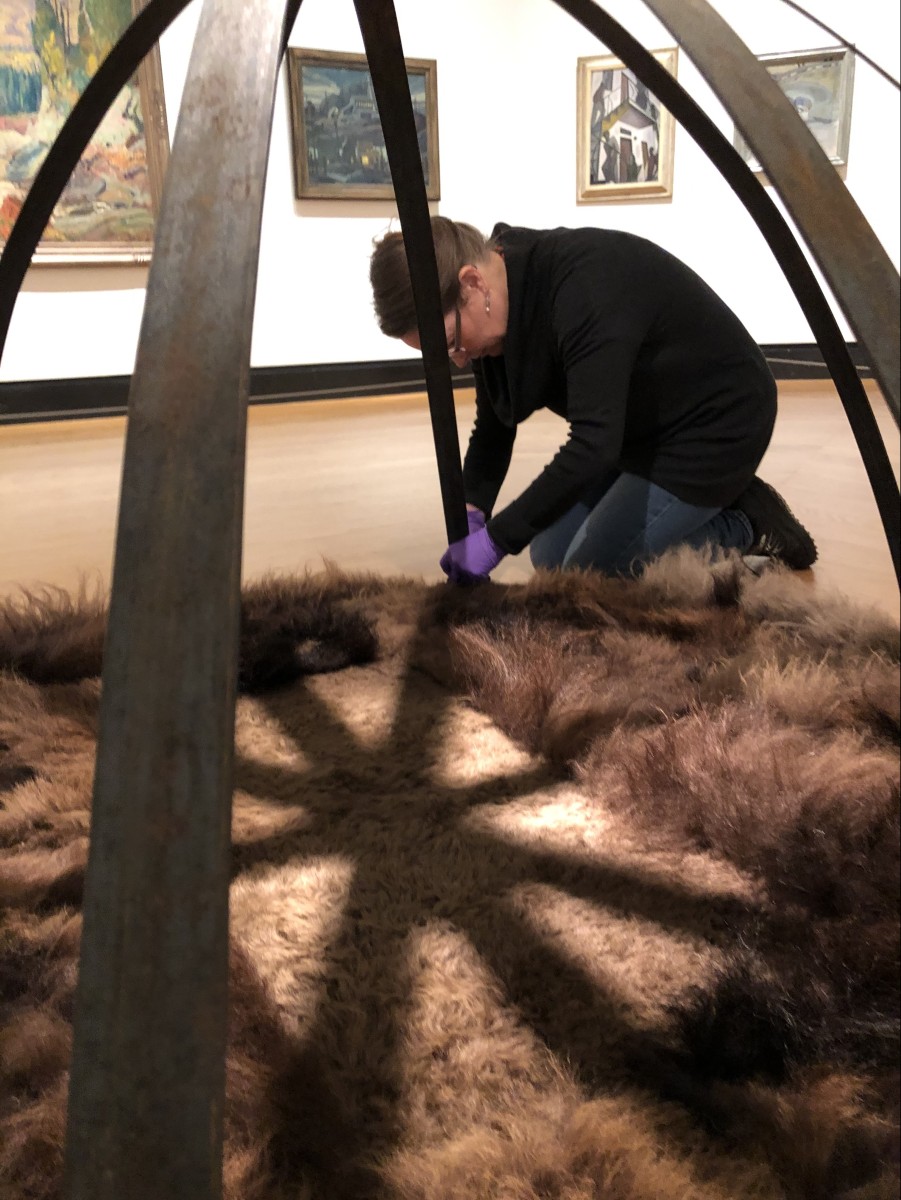Conservation in the time of the Coronavirus
To preserve and protect: we check in with our Conservation team to find out how they're keeping the AGO Collection safe.
The AGO is home to one of the country’s largest conservation departments, staffed by specialists with expertise in the care and preservation of artworks - from paintings and sculptures to photographs and works on paper. While the AGO remains temporarily closed to the public, these devoted professionals continue to tour the Gallery regularly, ensuring the safety and well-being of the Collection.
This vigilance is especially important for works containing organic materials, textiles or fur, including Tim Whiten’s Metamorphosis (1978 ̶1989 ) and Adrian Stimson’s Old Sun (2005) (above). The organic elements in these pieces make them particularly vulnerable to pests.
From a safe distance, we caught up with Sherry Phillips, the AGO’s Conservator of Contemporary Art, to better understand the unique challenges presented by these two works, during these uncertain times.
AGO: What is it about these two works in particular that makes them more vulnerable than, say, an oil painting?
Phillips: For the Whiten work, it’s the bearskin and the eggshells. And for the Stimson, it’s the large bison fur. Any artwork with fur, feathers, wool or other organic materials are at risk for museum pests like webbing clothes moths. The AGO has an active IPM (integrated pest management) program that continues during the closure. Each week, team members inspect pest traps located in the galleries, the lab and the vaults for signs of possible infestation.
AGO: What have you done to protect Metamorphosis by Tim Whiten?
Phillips: First, we removed the bearskin from the bed of eggshells it sits upon. We then sealed it in polyethylene and brought it to our in-house freezer to kill any pests that may already be present. With the bearskin removed, it’s easier for us to thoroughly monitor the eggshells for pests during our walk-through. Fun fact: We treated all of the crushed eggshells (several five-gallon buckets worth!) with bleach and water to clean them of any bacteria before the piece was first installed.
AGO: What about Adrian Stimson’s Old Sun?
Phillips: This piece is too big for our team to move and too big for the AGO’s freezer, so we dismantled it and sealed the bison fur component in polyethylene to prevent infestation. We visibly placed a pest trap inside the polyethylene, so we can keep an eye on it during our rounds. For now, it remains in the Fudger Rotunda where we can monitor it and keep it safe until we reopen.
AGO: How about the team? How are YOU keeping safe while entering the museum?
Phillips: We largely work alone for the six hours we're in the building, but we each carry a radio to communicate with the Protection Services team as needed. If we encounter other staff members, we maintain a safe distance. The AGO donated most of our PPE to front-line workers a few weeks ago, but when required we wear masks and gloves. This helps to protect the artwork, but it’s also handy to prevent contact with doors, elevator buttons, etc.
See these works and others online through the AGO from Home Collection Search. Looking for more tutorials and art news from the AGO and beyond? Stay tuned to the AGOinsider.

